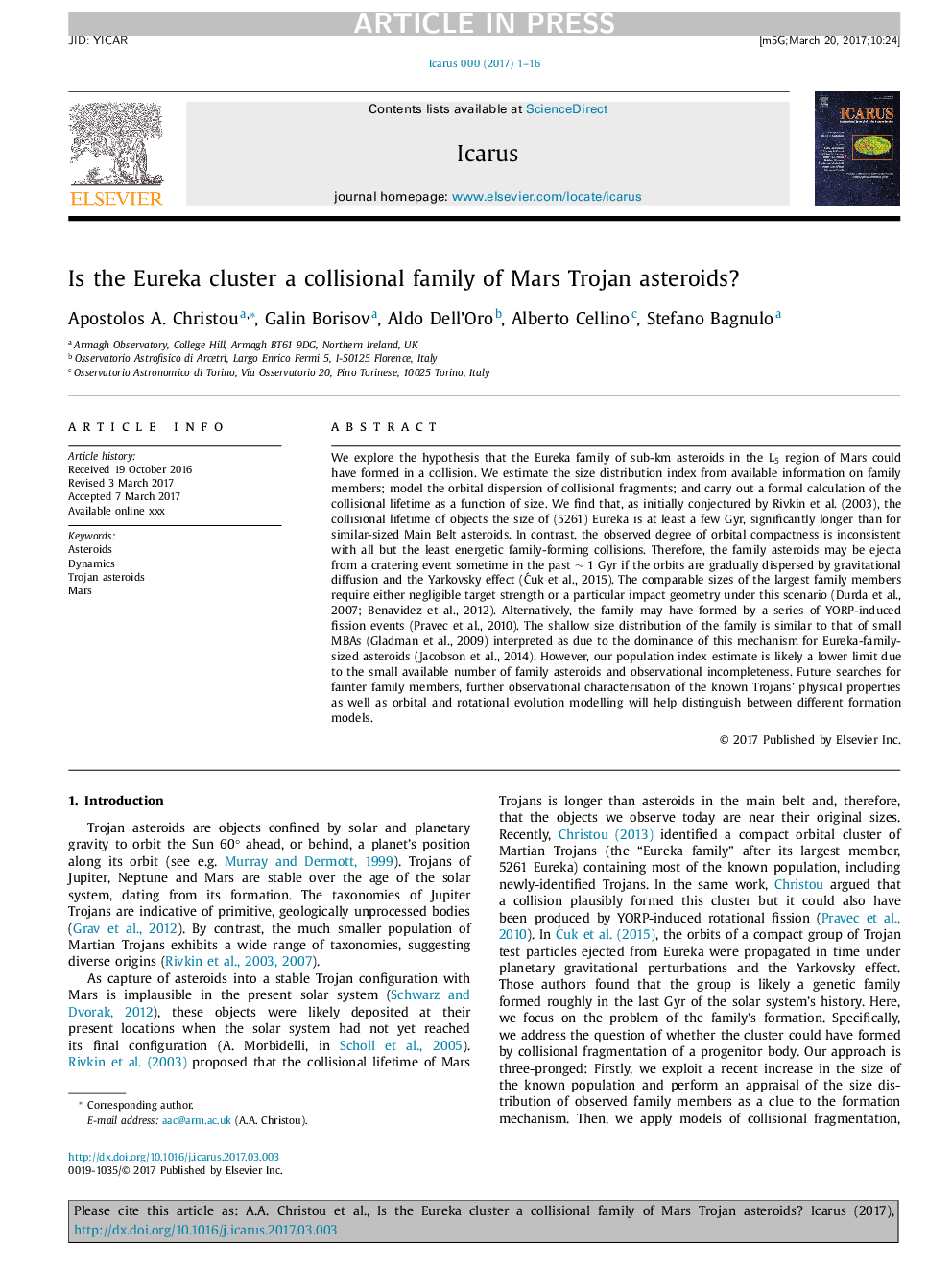| کد مقاله | کد نشریه | سال انتشار | مقاله انگلیسی | نسخه تمام متن |
|---|---|---|---|---|
| 5487011 | 1523498 | 2017 | 16 صفحه PDF | دانلود رایگان |
عنوان انگلیسی مقاله ISI
Is the Eureka cluster a collisional family of Mars Trojan asteroids?
دانلود مقاله + سفارش ترجمه
دانلود مقاله ISI انگلیسی
رایگان برای ایرانیان
موضوعات مرتبط
مهندسی و علوم پایه
علوم زمین و سیارات
علوم فضا و نجوم
پیش نمایش صفحه اول مقاله

چکیده انگلیسی
We explore the hypothesis that the Eureka family of sub-km asteroids in the L5 region of Mars could have formed in a collision. We estimate the size distribution index from available information on family members; model the orbital dispersion of collisional fragments; and carry out a formal calculation of the collisional lifetime as a function of size. We find that, as initially conjectured by Rivkin et al. (2003), the collisional lifetime of objects the size of (5261) Eureka is at least a few Gyr, significantly longer than for similar-sized Main Belt asteroids. In contrast, the observed degree of orbital compactness is inconsistent with all but the least energetic family-forming collisions. Therefore, the family asteroids may be ejecta from a cratering event sometime in the past â¼ 1 Gyr if the orbits are gradually dispersed by gravitational diffusion and the Yarkovsky effect (Äuk et al., 2015). The comparable sizes of the largest family members require either negligible target strength or a particular impact geometry under this scenario (Durda et al., 2007; Benavidez et al., 2012). Alternatively, the family may have formed by a series of YORP-induced fission events (Pravec et al., 2010). The shallow size distribution of the family is similar to that of small MBAs (Gladman et al., 2009) interpreted as due to the dominance of this mechanism for Eureka-family-sized asteroids (Jacobson et al., 2014). However, our population index estimate is likely a lower limit due to the small available number of family asteroids and observational incompleteness. Future searches for fainter family members, further observational characterisation of the known Trojans' physical properties as well as orbital and rotational evolution modelling will help distinguish between different formation models.
ناشر
Database: Elsevier - ScienceDirect (ساینس دایرکت)
Journal: Icarus - Volume 293, 1 September 2017, Pages 243-258
Journal: Icarus - Volume 293, 1 September 2017, Pages 243-258
نویسندگان
Apostolos A. Christou, Galin Borisov, Aldo Dell'Oro, Alberto Cellino, Stefano Bagnulo,